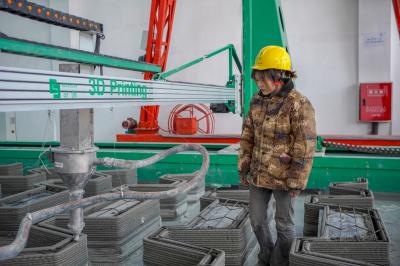Public health services are guaranteed in a more comprehensive way. A law on mental health has been adopted and enforced. Efforts have been made to carry out the Development Guidelines for the National Mental Health Work System (2008-2015) and strengthen the construction of a mental health service system. A nationwide program has been implemented to screen, diagnose, register and visit those who suffer from severe mental problems. By the end of 2015, 4.922 million mentally ill people had been registered around the country, accounting for 85.5 percent of all such patients. The per-capita spending for public health services was raised to 40 yuan by 2015 from 25 yuan in 2011. Urban and rural residents were entitled to such free services as establishing health records, and receiving health education and vaccination. The world's biggest direct Internet reporting system has been set up for infectious diseases and public health emergencies. A total of 265 demonstration areas have been established for the comprehensive prevention and treatment of chronic diseases, managing over 86 million people suffering from high blood pressure and over 24 million diabetics. A border prevention and control system was established that integrates risk assessment, on-site quarantines, laboratory testing, information disclosure and joint prevention and control. By June 2014, a total of 259 ports of entry in operation had been evaluated and accepted, greatly raising the abilities for disease prevention and control and the handling of emergencies at ports of entry.
The prevention of endemic diseases has been enhanced. The goal of eliminating iodine deficiency diseases has been realized. In areas with a high incidence of endemic fluorosis caused by coal burning, preventive measures have been adopted with 99.4 percent of the coal-burning furnaces and stoves modified. China has basically completed projects to provide safe drinking water and improve water quality in areas afflicted by endemic fluorosis and arseniasis which are caused mainly by unsafe drinking water. An investigation into the regional distribution of endemic arseniasis has been completed, and measures aimed at modifying furnaces and stoves or improving water quality by reducing arsenic have been basically implemented. Comprehensive prevention and control measures have been taken including the relocation of residents from areas afflicted by Kaschin-Beck and Keshan diseases and the consumption of foodstuffs from non-endemic areas. By the end of 2014, over 90 percent of the villages afflicted by Kaschin-Beck disease had brought the disease under control, and 96.4 percent of the counties where Keshan disease remained an endemic had also brought it under control, achieving the planned goals in advance.
The safety of drinking water has been further ensured. By the end of 2015, China had expanded a monitoring network for the safety of drinking water, and extended its coverage to all urban districts and over 60 percent of townships. Between 2011 and 2015, as many as 298 million rural residents and 41.33 million rural teachers and students had access to safe drinking water, and meanwhile, efforts were made to make safe drinking water accessible to 5.66 million rural people in particularly difficult areas including ethnic Tibetan areas in the provinces of Qinghai, Sichuan, Gansu and Yunnan. The proportion of the rural population with access to centralized water supply was raised from 58 percent in 2010 to 82 percent in 2015, with tap water available to 76 percent of rural areas. All the progress made exceeded the planned goals.
Food and drug safety measures have been enhanced. The China Food and Drug Administration was established in 2013. In 2015, the NPC Standing Committee amended the country's food safety law, and the departments concerned laid down a series of departmental regulations including the Provisions for the Administration of Food Business Licensing, the Provisions for the Administration of Quality and Safety Monitoring for the Sale of Edible Agricultural Products and the Administrative Procedures for Food Recalls. The Supreme People's Court and the Supreme People's Procuratorate promulgated the Explanations on a Certain Number of Issues Relating to the Application of Laws to Criminal Cases Harming Food Safety and the Provisions on a Certain Number of Issues Relating to the Application of Laws on Cases of Disputes over Food and Drugs. Nearly 5,000 criteria for various kinds of foodstuffs were reviewed and 683 state criteria for food safety were promulgated. |
- Home
- News |Tibet |Exclusive |China |World |Related News |Latest
- Documents |White Papers |Others
- Photo |Politics |Economy & Society |Culture & Religion |Human & Nature |Beautiful Tibet |Other Tibetan-Inhabited Area |Exchanges |Related
- Video |News |Documentary |Micro-Video |Entertainment
- Art
- Tourism
- In Focus
- About Tibet






